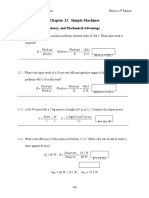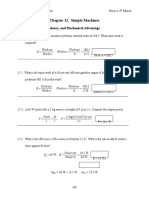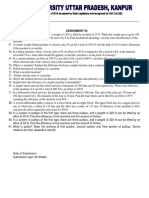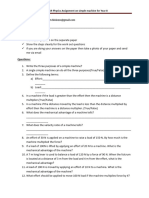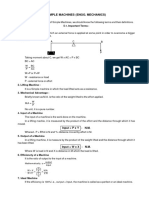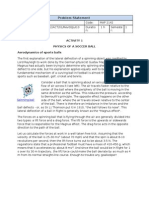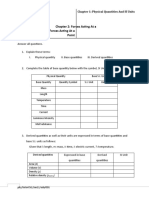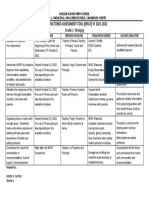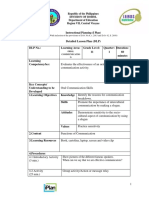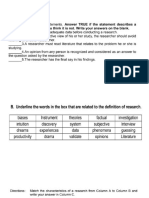0% found this document useful (0 votes)
241 views4 pagesPhysics: Simple Machines Guide
This document contains a chapter on simple machines from a physics textbook. It includes definitions and examples of different types of simple machines, such as levers, pulleys, gears, and screws. It also contains 9 problems related to calculating force ratios, movement ratios, and efficiencies of simple machines based on given information about efforts, loads, distances, and other variables.
Uploaded by
Sahida IshakCopyright
© Attribution Non-Commercial (BY-NC)
We take content rights seriously. If you suspect this is your content, claim it here.
Available Formats
Download as DOCX, PDF, TXT or read online on Scribd
0% found this document useful (0 votes)
241 views4 pagesPhysics: Simple Machines Guide
This document contains a chapter on simple machines from a physics textbook. It includes definitions and examples of different types of simple machines, such as levers, pulleys, gears, and screws. It also contains 9 problems related to calculating force ratios, movement ratios, and efficiencies of simple machines based on given information about efforts, loads, distances, and other variables.
Uploaded by
Sahida IshakCopyright
© Attribution Non-Commercial (BY-NC)
We take content rights seriously. If you suspect this is your content, claim it here.
Available Formats
Download as DOCX, PDF, TXT or read online on Scribd
/ 4

